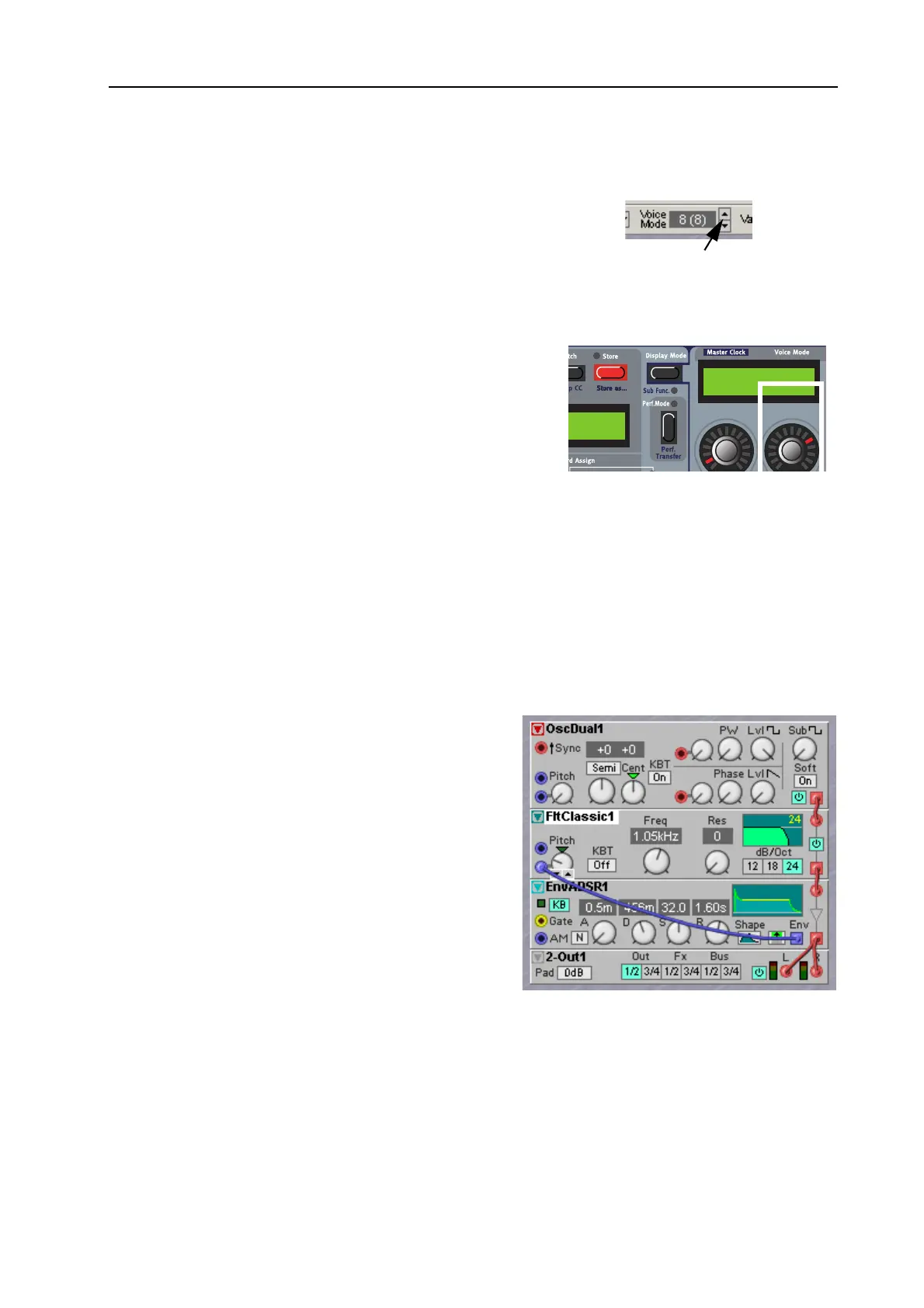Nord Modular G2 handleiding
Handleiding
Je bekijkt pagina 65 van 291

NORD MODULAR G2 V1.4x 5. The Editor application: Making your first patch
Page 65
Note! The dynamic allocation method used by other multitimbral hardware synthesizers is not applicable
to the Nord Modular G2, see also “Voice allocation and polyphony” on page 138.
You can easily adjust the polyphony for a Patch in the synth
by selecting a S
LOT
, pressing the P
ATCH
S
ETTINGS
button
and turn the K
NOB
below the Voice Mode D
ISPLAY
. This
can be useful if you have a couple of Patches loaded in several
S
LOTS
and wish to quickly redistribute the polyphony among
the Patches.
The Nord Modular G2 note recognition system operates
according to the “last note” principle. If you run out of
polyphony and continue to play notes, the synthesizer will
always add the last note played and remove the first note, with
one exception: it will try to keep the lowest note sounding.
A
DDING
SOME
TIMBRAL
CONTROL
The sound of this Patch is not really something special, it
sounds overly bright, a bit thinnish and not very lively. It is time to do something about the timbre by
adding a filter module that will give more character to the sound. This filter will be inserted between the
OscDual output and the EnvADSR input.
Select the F
ILTER
module Group selector and find a Module Icon named F
LT
C
LASSIC
. Drag the
Module Icon into the Voice Area on the separation line between the OscDual and the EnvADSR
module. Next step is to disconnect the cable between the OscDual and the EnvADSR. Then make a
cable connection from the OscDual output to the FltClassic input and from the FltClassic output to the
EnvADSR input. Notice that inputs and outputs line up nicely at the right side of the modules.
When you play notes you will notice that the sound lost
much of its brightness, caused by the filter removing all
the high harmonics. To give the sound more character
it is custom to give the timbre a contour, similar to the
loudness contour. On the E
NV
ADSR module you see
an extra blue output named E
NV
. This output
produces a control signal that follows the loudness
contour. This signal can cause the FltClassic to follow
the loudness contour as well, which makes the filter
‘sweep’. For a filter sweep a cable connection has to be
made from this blue Env output to the Pitch input on the
FltClassic module. Then, by opening the knob next to
this Pitch input the amount of contour that controls the
FltClassic can be set. Open this Pitch knob on the
FltClassic about a quarter and also lower the S knob on
the EnvADSR module until it is halfway, to make the contour more snappy.
At this point you have made a basic patch that has three separate modules to control the pitch, the timbre
and the loudness contour. Now it is time to try out the knobs on the modules. Change knobs by small
bits only, so you clearly hear in what ‘direction’ it makes the sound change.
Set the requested number of voices by
clicking the arrow buttons. The requested
number of voices is shown within paren-
thesis and the actual number of voices is
shown to the left in the display box.
120 BPM 04 (04)
RUN Poly
Synth
sSUN FH
See the actual and requested number of
voices allocated to the Patch in the display.
Bekijk gratis de handleiding van Nord Modular G2, stel vragen en lees de antwoorden op veelvoorkomende problemen, of gebruik onze assistent om sneller informatie in de handleiding te vinden of uitleg te krijgen over specifieke functies.
Productinformatie
| Merk | Nord |
| Model | Modular G2 |
| Categorie | Niet gecategoriseerd |
| Taal | Nederlands |
| Grootte | 60689 MB |







